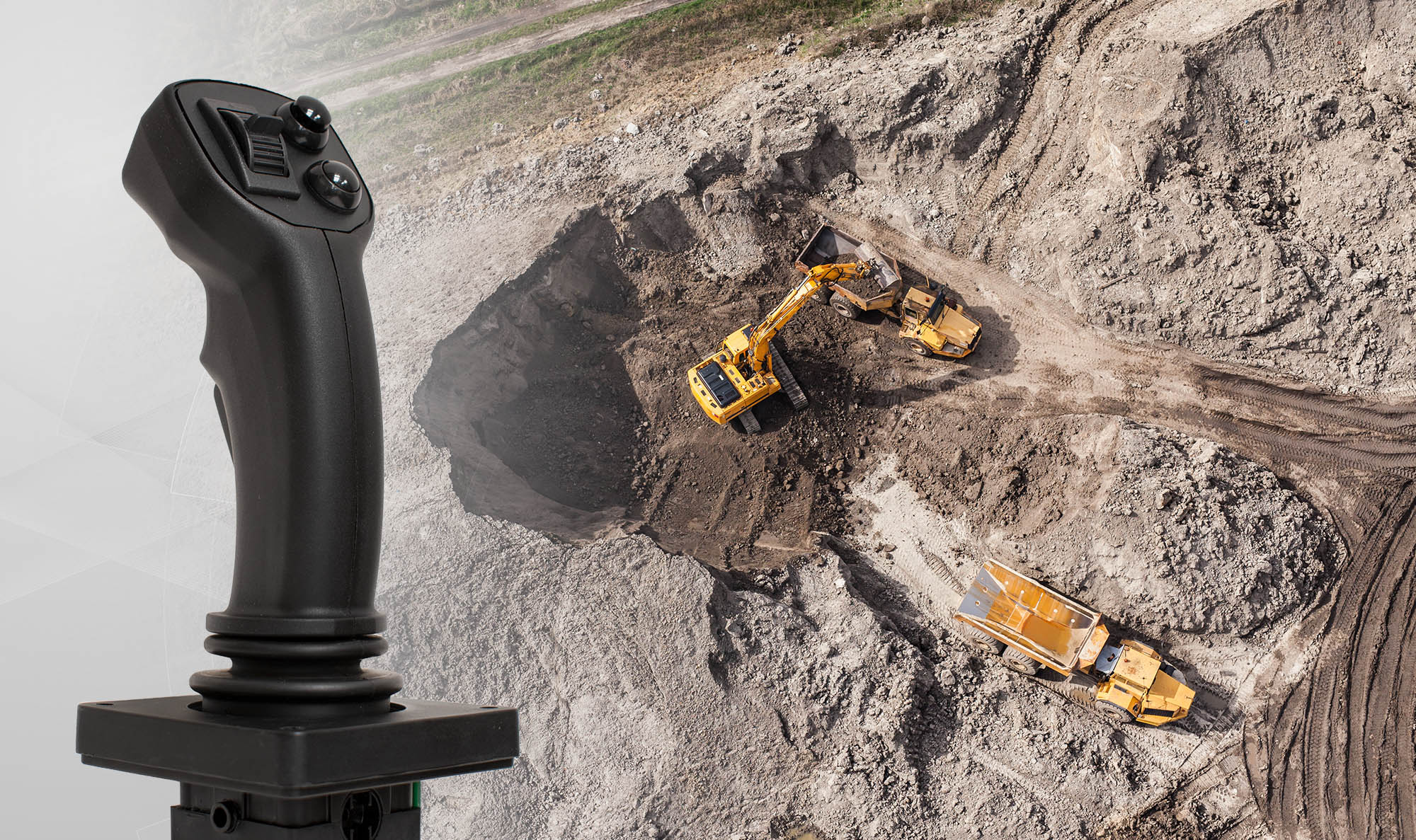
From unforgiving environmental conditions to repetitive, high-duty-cycle functions, manufacturers of off-highway / construction equipment face a variety of unique challenges. When you factor in cramped vehicle cabs and the need to accommodate for varying operator styles, choosing the right joystick for the job becomes an essential piece of the puzzle – especially as the industry moves to offer operators more functionality right at their fingertips to maximize efficiencies.
Form, Fit and Function
Finding the right fit for any application starts with identifying the functions the joystick is intended to control. If the joystick is for proportional control, identify the axes that are proportional and their signal requirements.
Other key considerations include: the physical parameters to be taken into account; the environment in which the equipment is going to be used; safety concerns; special electrical control requirements; the operator’s style and preferences; and relevant budgetary guidelines. Addressing these questions will help you identify the type of joystick, handle style and advanced features that will be the best match for your equipment.
Consider the Application
The end use for the equipment in question should guide your initial decisions about the form factor that is best suited to your application. For example, a finger-operated joystick would not be considered the best fit for an application that is subject to consistent heavy vibration and heavy-handed maneuvering. JR Merritt’s heavy-duty CS3 joystick would be a more suitable solution.
Duty cycle is also an essential consideration. Be sure to choose a joystick that is rated for enough operations to stand up to the demands on the equipment over time. Off-highway equipment is typically subjected to high duty cycles. Without a joystick that can stand up to this rigorous use, your equipment will be more susceptible to downtime. Review the manufacturer’s duty cycle rating and question how this rating was obtained. J.R. Merritt cycle tests all of its controllers at a minimum of 1000 operations per hour. A less severe test run over a longer duration could give a false impression of an alleged high-duty-cycle device’s true life.
Fit the Space
With off-highway equipment, space is almost always at a premium, leaving you with a variety of physical parameters that need to be considered when choosing your joystick. How long of a handle can be accommodated while still leaving enough space for comfortable operation? Will the joystick be mounted on a flat panel, on an angle or directly on a seat or a console arm? Will it be tilted toward, away or down from the operator? A joystick that offers many mounting options and design flexibility can be invaluable in tight quarters. When determining the final placement of the joystick, function again comes into play. How should the joystick be arranged in relation to the equipment’s complementary control elements to maximize operating efficiencies?
Don't miss part 2 of this series, where we explore environmental conditions, the operator, and placement tips for joysticks in off-highway machinery applications.